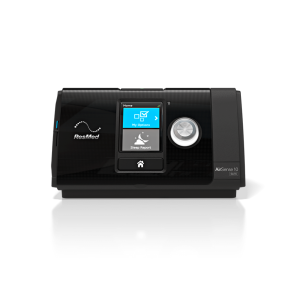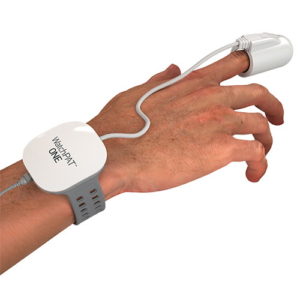Fact Checked
Intus Healthcare’s writers, customer service team, and sleep experts review and ensure this information is accurate.
Last updated on April 2nd, 2024 at 10:23 am
Sleep disorders can significantly impact an individual’s quality of life and overall health. Upper Airway Resistance Syndrome (UARS) is a relatively lesser-known condition, often overshadowed by the more common condition, Obstructive Sleep Apnoea (OSA). Both conditions present themselves with the same symptoms; therefore, determining what a person’s sleep condition is is essential.
The differences between UARS and OSA
UARS is similar to OSA, although it is slightly different; here are some ways in which it differs:
- Airway Resistance: In UARS, the upper airway experiences increased resistance during sleep. This differs from OSA, where the airway collapses entirely. These resistance-related events are often subtler and, as a result, may not cause a person to choke like Sleep Apnoea.
- Partial Obstruction: In UARS, individuals frequently experience partial airway obstruction, leading to disruptions in airflow and breathing patterns. They are different to OSA, as the obstructions only happen sometimes.
- Micro-Arousal: To counteract the increased resistance and maintain an adequate oxygen supply, individuals with UARS experience micro-arousals, typically milder than OSA obstructions. These awakenings may be so brief that they often go unnoticed by the individual, but they significantly disrupt the sleep cycle.
- Severity: Both can be severe sleep disorders with detrimental effects on health and well-being. However, UARS is often considered less severe, making it challenging to analyse.
- Symptoms: Both have very similar symptoms, including snoring, daytime fatigue, and difficulty concentrating. However, due to the lighter breathing resistance, sufferers do not wake up gasping for air as they commonly do with OSA.
If left untreated, UARS patients usually experience a lower quality of life and daytime symptoms ranging from fatigue, insomnia, and depressive mood. As mentioned above, it can present similar symptoms as OSA, such as morning headaches, cognitive impairment, and irritability, mirroring the impact of OSA on daily functioning. The conditions can manifest differently in different individuals, and some may have milder symptoms than others; prognosis can vary accordingly.
Prolonged periods of restricted airflow during sleep are linked to elevated carbon dioxide levels, which can increase the risk of developing other health conditions.
Causes of UARS
The causes can vary from person to person, and while the exact causes of are not fully understood, several contributing factors may play a role. These factors can include:
- Airway anatomy
- Obesity
- Nasal congestion
- Decreased muscle tone
- Smoking
- Deviated septum
- Family history
How do I know if I have UARS or OSA?
If you show signs of UARS, it is key to determine if you have the condition; if left to progress, it can develop into Sleep Apnoea. As both conditions present themselves with the same symptoms, your doctor may suggest taking a home sleep study to monitor your brain waves, breathing patterns, heart rate and blood oxygen levels. Taking a home test puts you one step closer to gaining quality sleep.
You may be advised to complete a Polysomnography (PSG), as home testing can only detect UARS but can not confirm the condition. A PSG allows for detecting flow limitation and associated arousal, which are required for confirming UARS.
A PSG is a more thorough testing option, as a home sleep test can only determine if Sleep Apnoea is apparent. A PSG takes place at a sleep clinic and requires an overnight stay. You can visit our types of sleep tests page to understand more about the differences between your test options.
Findings from Sleep Studies
- RERAs: Respiratory Effort Related Arousals (RERAS) are a distinguishing feature of UARS. These brief, repetitive arousals result from increased respiratory effort and are often absent in OSA. Sleep studies identify these brief arousals, often not caused by significant drops in oxygen saturation.
- RDI and AHI: The Apnoea Hypopnoea Index (AHI) measures the number of apnoea’s (complete cessation of airflow) and hypopnoea’s (partial obstructions) per hour of sleep. In OSA, AHI typically reflects more significant events, leading to the classification of the disorder’s severity. Those with UARS typically have a normal AHI but an abnormal Respiratory Disturbance Index (RDI). RDI encompasses a broader spectrum of respiratory events, including apnoea’s, hypopnoea’s, and respiratory effort-related arousals (RERAs) that signify increased effort to breathe during partial obstruction. In UARS, RDI often comes into play because it accounts for the subtle, resistance-related breathing issues that do not meet the criteria for hypopnoea’s.
- Flow Limitation: During sleep studies, UARS is characterised by upper airway resistance flow limitations in airflow curves.
Home Sleep Apnoea Testing
Our In-Home Sleep Test is a quick and reliable way to determine Sleep Apnoea. The non-invasive test requires just one night of sleep, and your results are returned to you within seven to ten working days.
Our customer care team and in-house clinicians are here to answer any questions you may have so you can regain confidence in your sleep.
What are the available treatment options for UARS?
The treatment options for UARS are similar to OSA treatments, although the recommendations differ from person to person; here are some examples:
Lifestyle adjustments: Different lifestyle changes can help reduce the risk of an airway obstruction; these include maintaining a healthy weight, quitting smoking, and practising good sleep hygiene. Other adjustments include addressing the underlying anatomical problems, such as nasal allergies and dental malocclusion; symptoms can decrease.
CPAP therapy: A continuous positive airway pressure (CPAP) machine has also been found to improve upper airway resistance, reduced arousal frequency, and respiratory-related heart rate changes. Explore more on CPAP in our CPAP therapy advice section.
Oral appliances: Also known as a Mandibular Advancement Device (MAD), it moves the mandibular bone and soft tissue forward, allowing more space behind the tongue. Other oral appliances used to treat patients include tongue-retaining devices and soft palate lifters.
Regular follow-up with healthcare providers is essential for monitoring progress and adjusting treatment as needed. Periodic sleep studies may be recommended to assess treatment efficacy and make necessary adjustments. It is important to remember the condition is a relatively newly recognised disorder, and research is still evolving.
In summary
Upper Airway Resistance Syndrome is a distinct sleep-related breathing disorder with similarities to Sleep Apnoea’s presentation and diagnostic criteria.
Accurate confirmation and differentiation between UARS and OSA are critical for tailoring treatment strategies and improving the quality of life for individuals affected by these conditions.
Early identification, alongside comprehensive care, can help individuals manage their symptoms and lead to healthier, more restful sleep.
Contact us for guidance and any advice.









